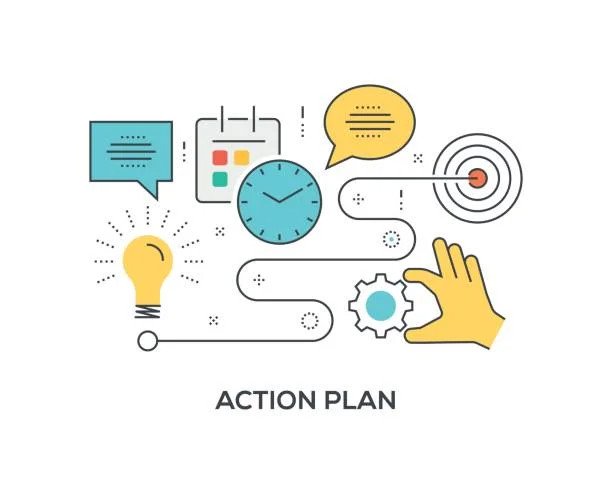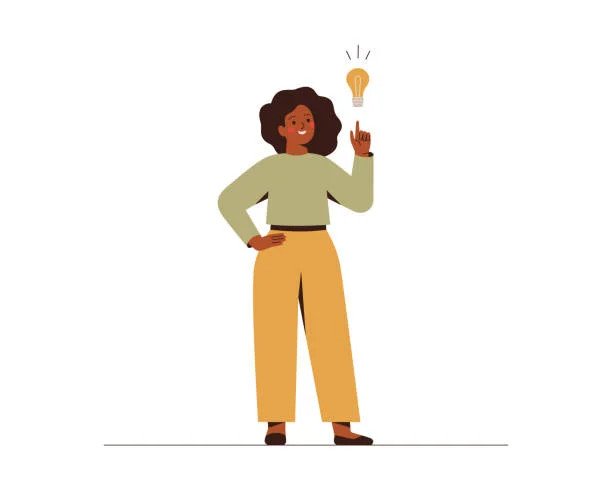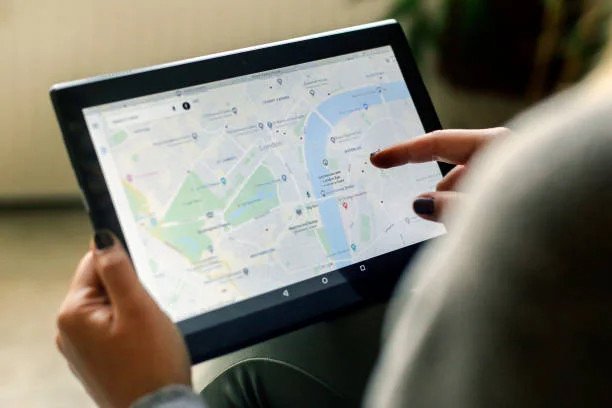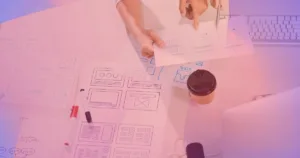Find an unmet demand, validate your firm concept, and design a compelling value offer to launch a profitable business. Bringing prospective clients into the process and using a human-centered design process will help you produce services and solutions the market will accept and embrace. This ensures you create marketable items and services.
The human-centered design methods incorporate a collection of approaches to understanding users’ requirements, limits, settings, behaviors, and goals so you can establish deep empathy with them, produce different ideas to solve their challenges, and prototype a solution. The human-centered approach is user-centered design. User-centered design is HCD.
What Is Human-Centered Design?
When addressing an issue, human-centered design, a problem-solving method, requires prioritizing your target audience’s needs. To effectively include human-centered design into your creative process, you must first understand your target audience, empathize with the issues they encounter, and build solutions that they would be ready to accept. The phrase “human-centered design” refers to the process of creating things with the ultimate purpose of reducing consumer issues and supporting them in living better, more satisfying lives.

Process of Creating a Human-Centered Design
IDEO, a multinational design firm, is credited for popularising by leveraging a human-centered design and dividing it into the following three phases:

- Inspiration
- Ideation
- Implementation
This article will explain what each phase of the process entails, plus how you can put it into practice to produce goods and services that customers would adore.
1- Inspiration
Learning from your existing clients is the primary focus of this initial phase. Instead of developing software based on preconceived conceptions of what you believe customers desire, you make sure to find out what it is that they truly want and then design the UI/UX of those products accordingly.

Empathy, or the capacity to comprehend the feelings and experiences of another person, is a necessary skill for the inspiration phase. You now have to imagine yourself in the position of your consumers and ask them questions to identify what digital products they are presently using, how and why they are using those products and the problems they are attempting to solve with those products.
It is an important notion to comprehend. According to this school of thought, consumers do not buy products; instead, they “rent” those products to carry out specific functions or realize particular ambitions on their behalf. Suppose you examine your products through the lens of this framework. In that case, you will be able to begin developing products that are centered on the motivations of your consumers rather than developing products based on typical client criteria like age, sex, wealth, and marital status.
Observing how people use your software and talking to other individuals who do so can help you figure out the tasks that people hire you to complete for them. Ask queries like as:
- What problem are you hoping to find a solution to with that software?
- How did you weigh the other possibilities?
- Why did you decide to invest on this product rather than one of the other options?
You’ll begin to think of audacious, novel ideas with each response you provide. Your objective is to collect as much input as possible so that you may start to see trends, habits, and pain areas that will inspire your ideal software product or service delivered to the customer.
2- Ideation
The ideas you come up with in the second phase will be based on the inspiration you gathered in the first phase. During this stage, you would like to explore as many ideas as you can on the basis of the feedback you obtained. When coming up with ideas through brainstorming, keep in mind that there are no negative ideas. Ignoring your customers’ requirements is the one and only method to throw off the process.
Construct multiple prototypes that you can give to others to try out and get their feedback on as you begin to whittle down your observations to those most likely to be successful and feasible. It might be as straightforward as a PowerPoint presentation or a paper wireframe. The goal is to put your ideas to the test, solicit feedback on those ideas, evolve on all those concepts, and then put those ideas to the test once again until you have established an optimal solution.
3- Implementation
Putting that perfect solution on the market represents the process’ conclusion. First, you need to think about who your consumers are or what they would like in their ideal world. However, even as you expand the availability of your product to a broader audience, you should keep collecting and analyzing feedback.

Because the demands and requirements of your clients will likely continue to develop over time, the iteration process must never be completed. Your objective is to change in order to satisfy them. Maintaining a focus on people throughout the development phase will allow you to achieve a state of constant innovation and a perfect product-market fit.
Also read: What Is Software Building Process? A Complete Guide
Features of Human-Centered Design
A technique that positions humans as the design effort’s primary focus is human-centered design. Developing new goods, services, or experiences takes into account the customer’s requirements, preferences, and goals.
The following are some instances of how this design system may be put to use:
- Designing for users’ needs:
This entails gaining knowledge of the requirements of consumers and coming up with goods, services, or activities that fulfill those requirements.
- Co-design:
Involving the client in the design process helps to guarantee that the end-result experience will be user-friendly and satisfy the user’s specific requirements.
- The design thinking process:
Empathizing with users, describing the issue at hand, coming up with potential solutions, rapid prototyping those solutions, and putting them to the test with users are all components of this method of creative problem-solving.
- User-experience (UX) design:
User experience design refers to the process of creating the design or experiences for end users that are intuitive, pleasant, and easy to use.
- Service design:
This is the process of creating end-to-end user journeys in order to guarantee that almost all engagements are user-friendly and give a wonderful experience for the customer.
Importance of Human-Centered Design
It would appear that most people are unaware of the many advantages offered by this particular approach to design philosophy. It has a direct and tangible impact on your bottom line.

The following is a summary of the benefits it provides you and the reasons why it is vital for creating any product, whether it be B2B, SaaS, or simply an essential app for the users.
Additional reading: IaaS, PaaS, SaaS: What’s The Difference & How To Select One?
1- More User Satisfaction
It is far more possible that a software project will end in a final product that is fulfilling and easy to use if the project is developed with the user in mind. This has the potential to result in higher levels of customer happiness and loyalty, as well as greater commercial outcomes.
To put it another way, ensure that your customers are satisfied and they will continue to utilize your business.
2- Increased Efficiency
Making the program easier to use contributes to the process of software development being more streamlined. When the demands of the user are prioritized, the design may be modified to accommodate the user’s particular specifications, which results in a product that is both more effective and efficient overall.
3- Faster Speed to Market
It makes developing software easier, resulting in a shorter amount of time needed to bring new goods and services to market. This can provide firms an advantage over their competitors and make it possible for them to make the most of fresh chances more rapidly.
4- Lesser Development Costs
There are a few ways in which human-centered design might assist in bringing down the overall expenses of development. One is ensuring that designs are intuitive and straightforward to use, reducing the frequency of time-consuming and expensive redesigns and modifications. In addition to this, it helps to guarantee that projects are properly planned and managed, which can result in fewer errors and difficulties that were not anticipated farther down the road. Finally, early user participation in design can save subsequent marketing and training expenses by fostering a sense of ownership and commitment to the project.
5- Boosted Sales and Profit
When software as a service (SaaS) product is developed according to the tenets in human-centered design, the end customers are more likely to purchase the product or service that satisfies their requirements.
Also read: Vertical SaaS vs Horizontal SaaS: Differences & Similarities
Contrasting Human-Centered Design With Design Thinking
HCD is a set of guidelines that may be used for developing new goods, services, and even entire systems.
Understanding and resolving issues may be accomplished through design thinking, a method that is collaborative, iterative, and hands-on. It bases its operations on the idea that innovation arises at the point where the user wants, current technologies available, and business objectives converge. It does this by bringing together teams of experts from various fields, including the people using the system.
Both design thinking and Human-Centered Design are helpful in their ways. Both stress and highlight a concentration on users to identify issues and trends. Both depend on being iterative, continually assessing and refining products based on users’ evolving requirements and skills. Both highlight and emphasize a focus on users to discover problems and patterns.
Examples of Human-Centered Design
And as the last point, let’s wrap things up by looking at real-life applications of this design concept out in the real world.
1-Spotify
Remember spending $1.99 for a single or browsing Walmart for an album?

Spotify is one of the most stunning examples of human-centered design. It showed me that my previous technique for buying music was a problem before we realized it.
Spotify understood its consumers’ challenge to pay for songs from many sources and devised a solution we all liked. Spotify gives consumers all their songs for one monthly cost. I’d pay more for specialized, helpful service.
2- Google Maps

Users may do a challenging activity in a much more straightforward manner with the help of this design principle, as exemplified by Google Maps. The app’s developers have thought about its target audience, as seen by features like comprehensive instructions and a straightforward layout.
Also read: A Step-by-Step Guide to Writing a UX Design Proposal in 2025
FAQs
What Is the Meaning of Human-Centered Design?
Human-centered design is a method for resolving issues that place actual people at the center of the development process. This enables you to make services and products that resonate with your target audience and are adapted to meet their specific requirements.
What Are the 3 Phases of Human-Centered Design?
The three phases of human-centered design and engineering are observation, ideation, and implementation.
What Is a Human-Centered Design and Why It Is Important?
It is a great technique to identify shifting habits, preferences, and pain spots. By accessing the user’s perspective, designers may construct solutions that perform effectively and broadly in our new reality.
